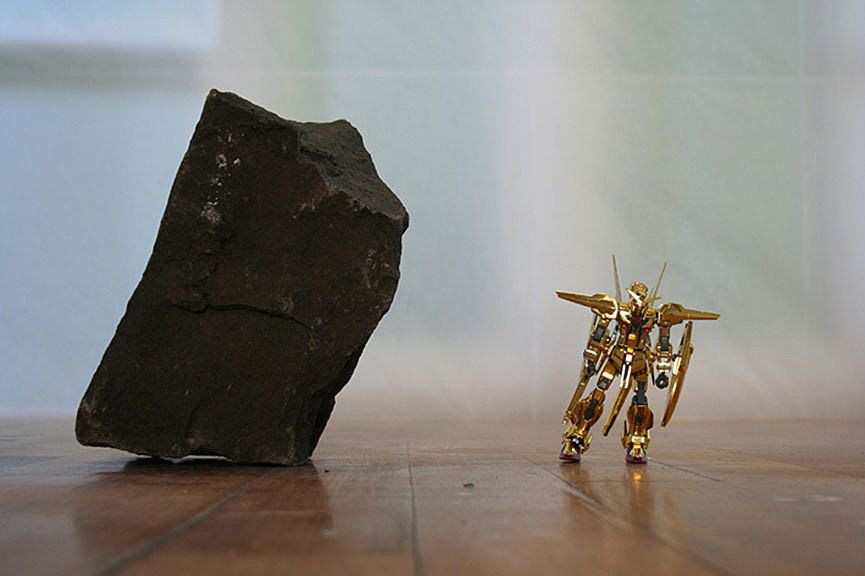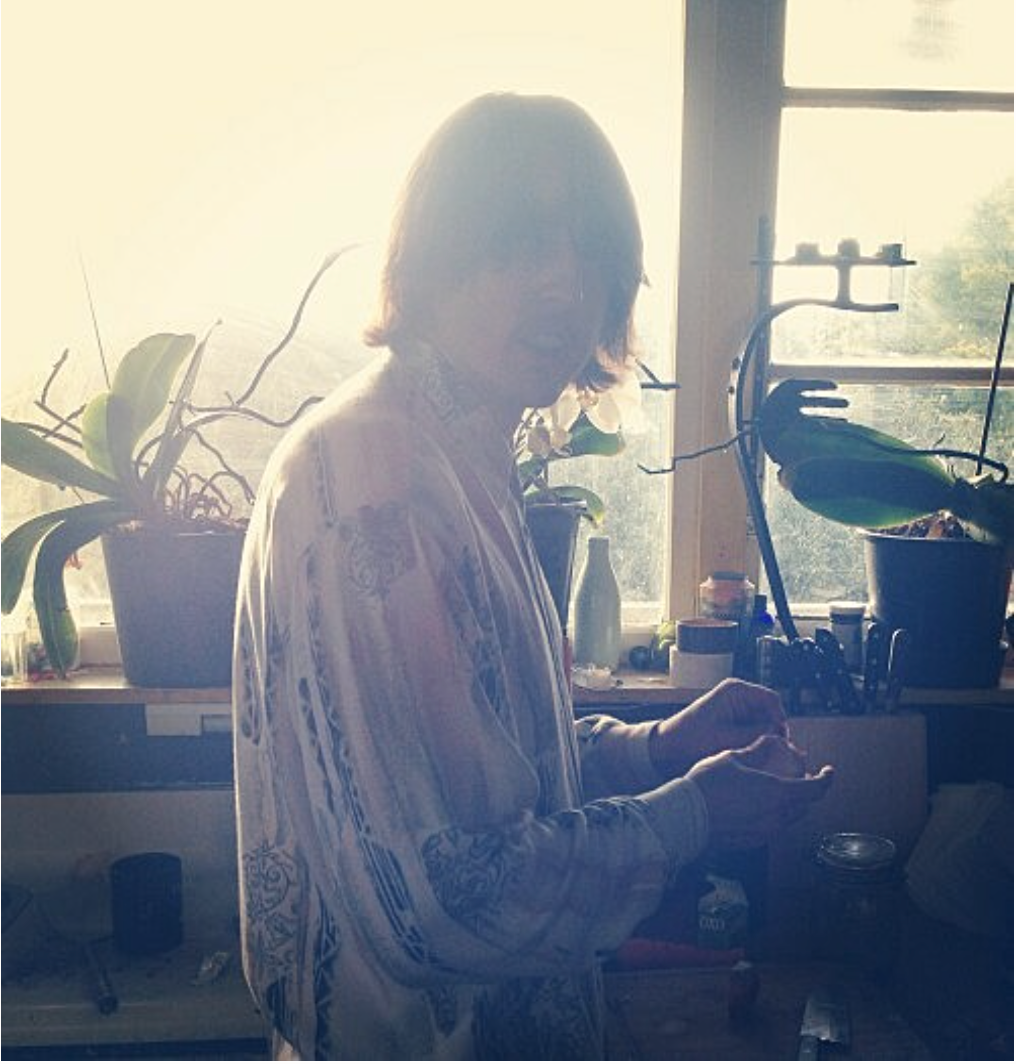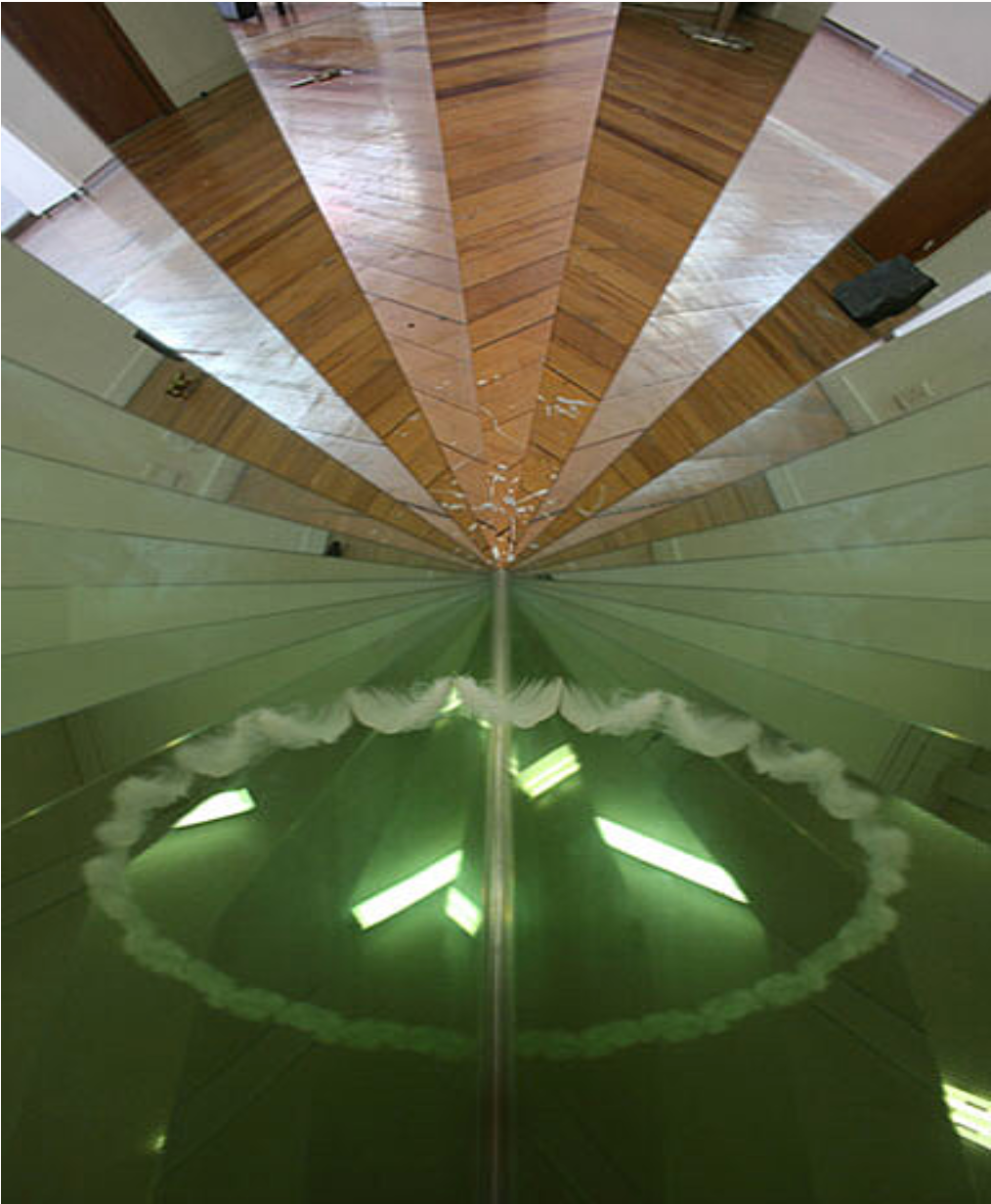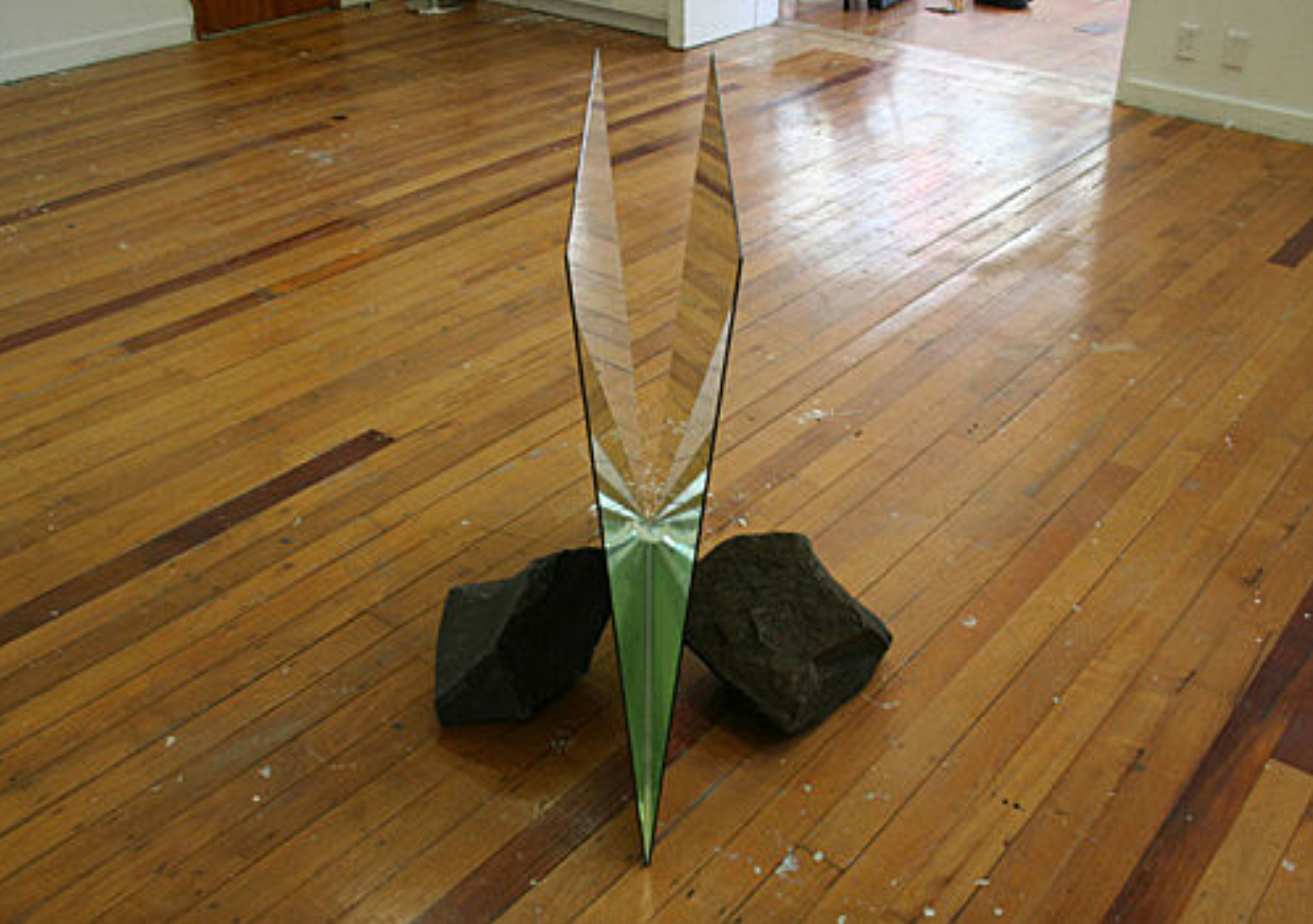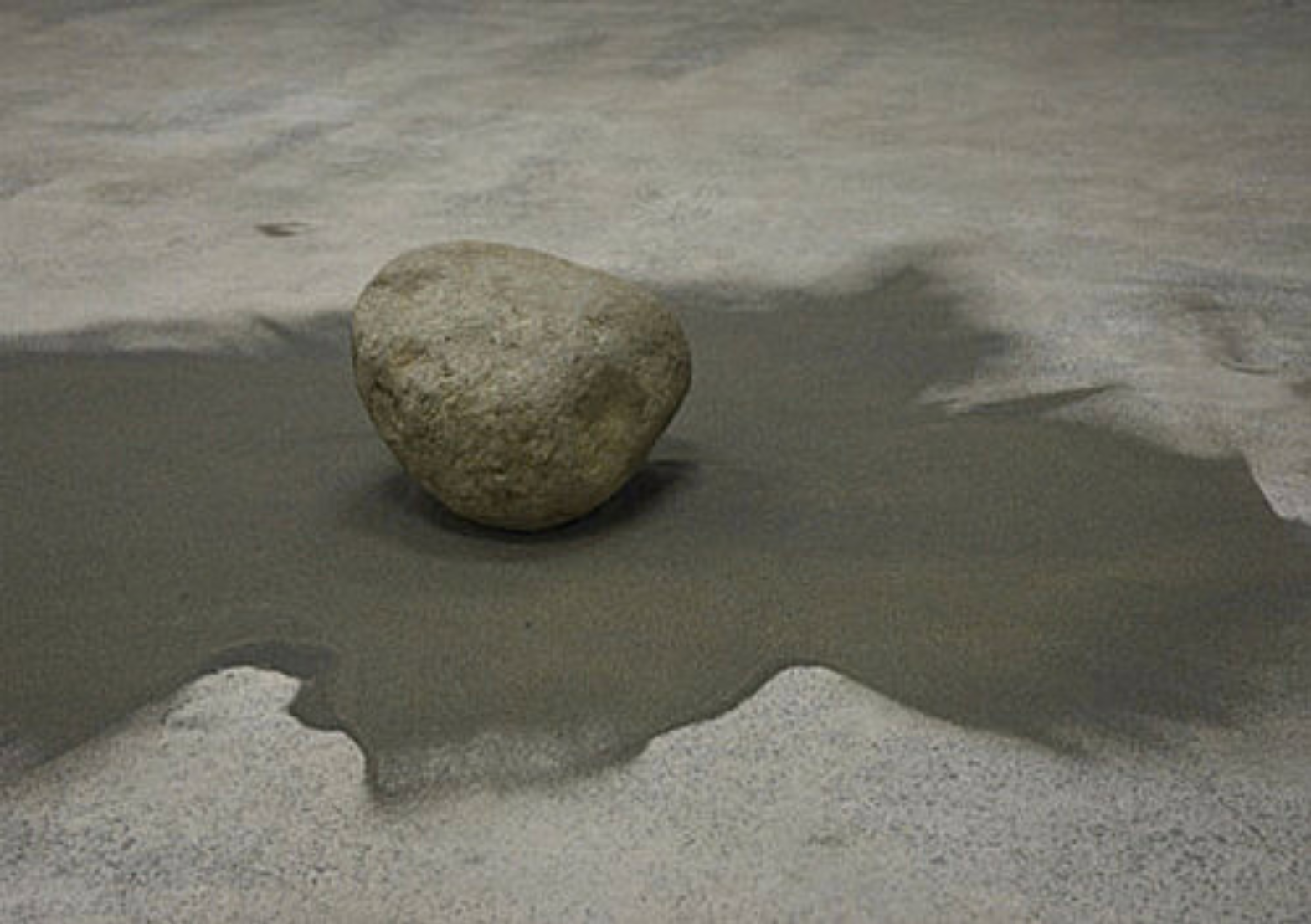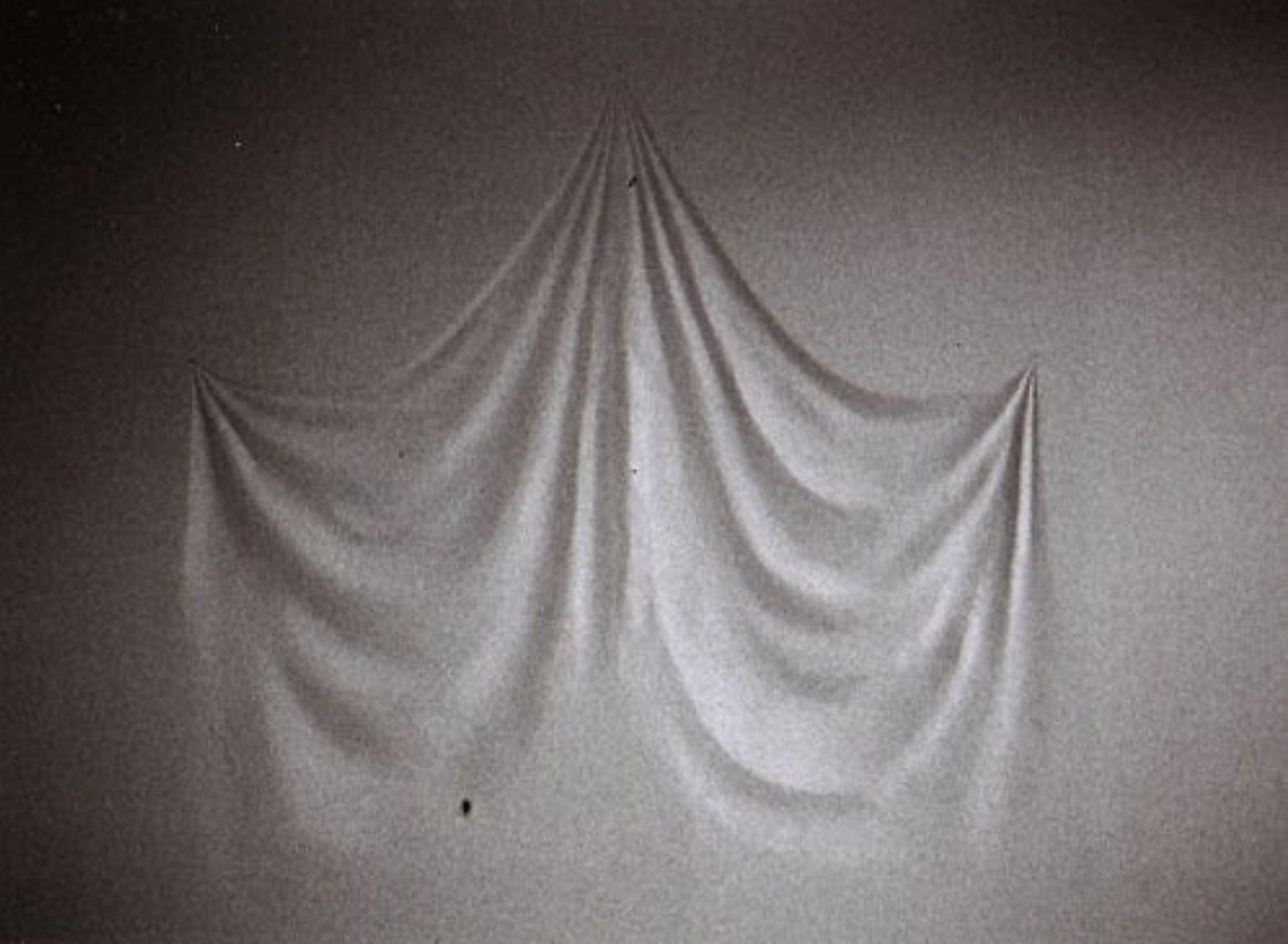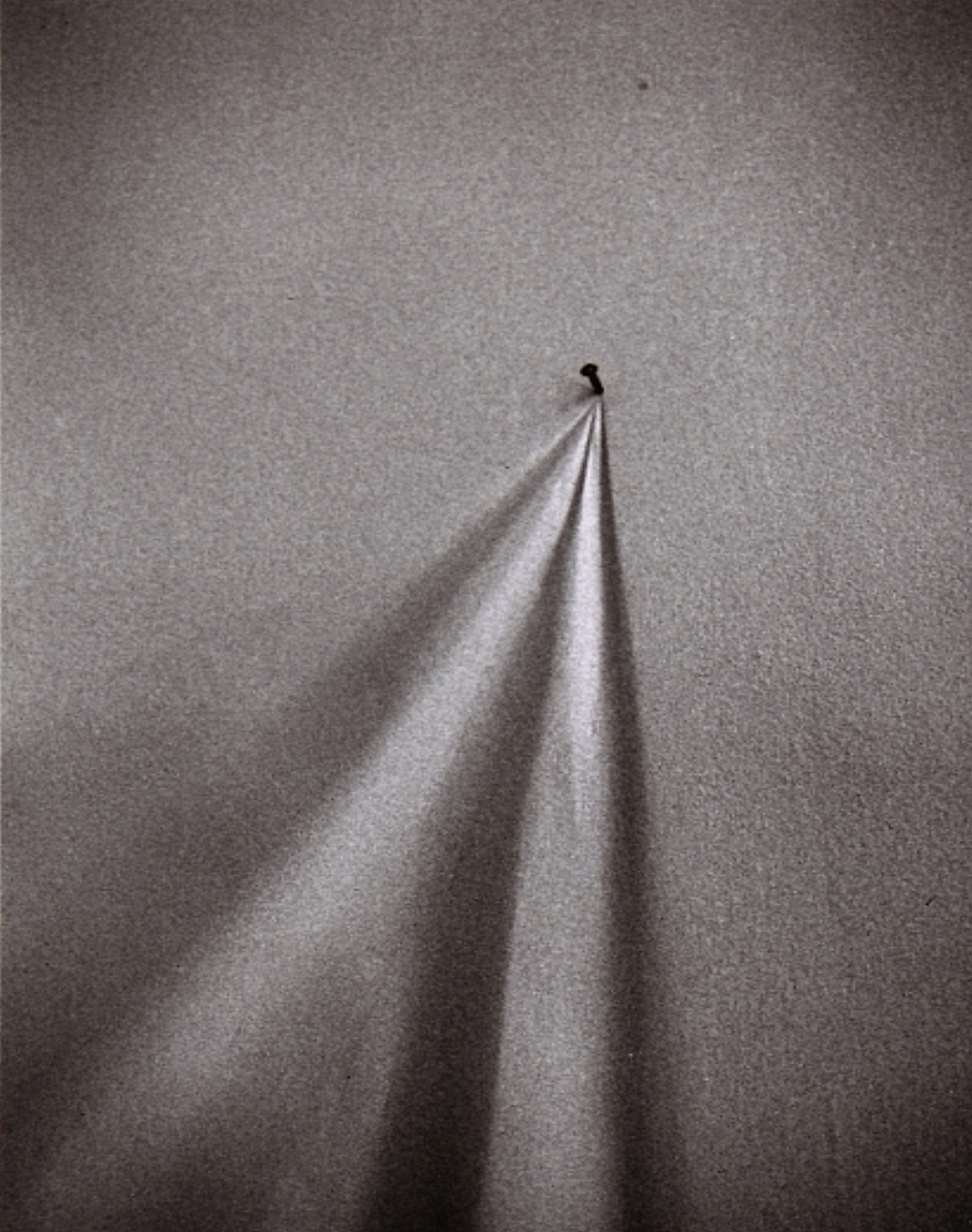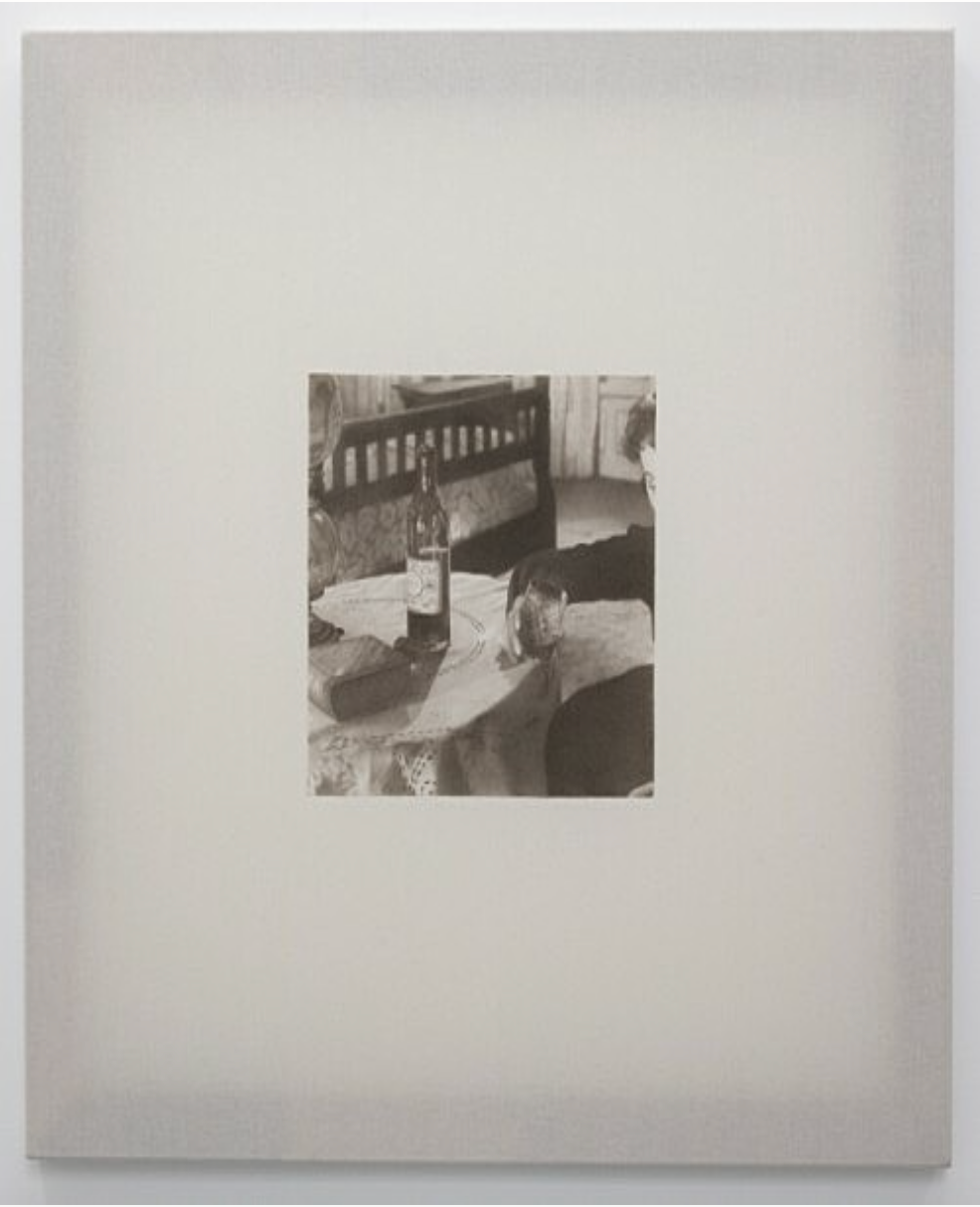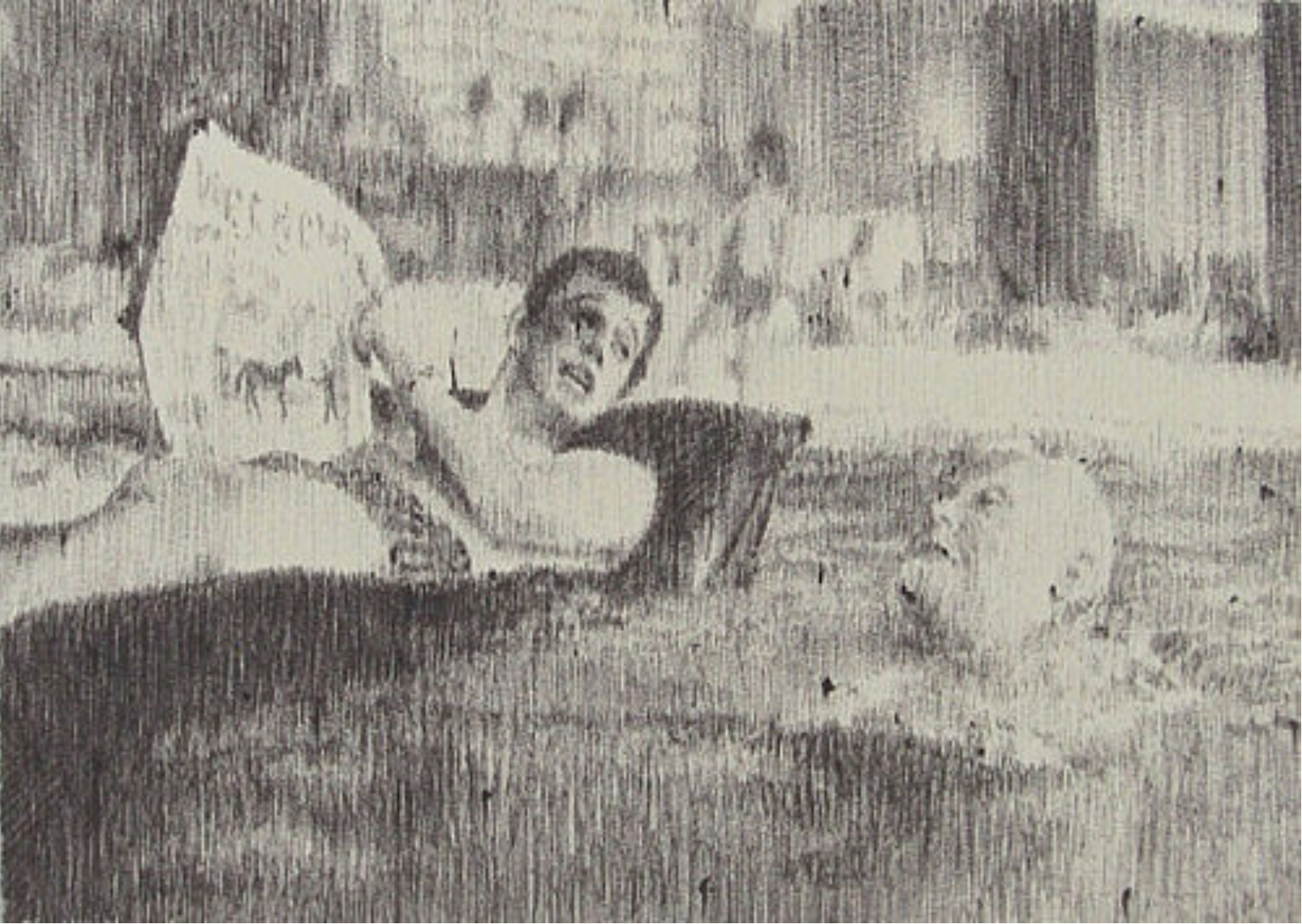John Ward Knox: Choreographer of Objects
Drawing on past and very recent encounters with his work, Mythily Meher chats to artist John Ward Knox about simplicity, the weight of anvils and the invisible labour behind his empathy for inanimate objects.
Asked to list his literary forebears, Ernest Hemingway named Goya, Van Gogh, Cezanne and Giotto amongst them. “I learn as much from painters about how to write as from writers,” he declared. He declined to elaborate, saying it would take a day to explain.
Composition likely comes into it. And impact. It’s in the paint daubs that suggest dappled light in a Cezanne landscape. In the shadowy figure clasping hands to mouth in white-eyed horror, described by Goya’s fleshy paint. You can see how these qualities might distill into a crisp Hemingway sentence. And you can see, in artist John Ward Knox’s work, how this clarity might transpose back out again, from wordy mediums to wordless ones.
John lists pared-back modernist writers as one of the stronger influences on his practice. “I’ve always been struck by the simpler sentences, and how they’re the most open to creating a sense of empathy for the character of the situation. Maybe not even a sense of empathy, but it’s something that hits you in between your guts and your lungs. They tend to just be matter-of-fact sentences. I guess I try to take that ethos, which I probably got from John Steinbeck, Hemingway, someone like that. I use materials like they use words. So where Steinbeck simply says, ‘and the world opened out’ – there are no flowery descriptions there – it’s just an action and an object. I try and replicate that within my own physical practice.”
This ethos is consistent in John’s ranging output. Wall-to-wall or corner installations, traditional drawings, conceptual drawings and the ‘readymades’ regularly cast in his sculptures, wall-works and occasional performances all possess, or at the very least, hark at, this particular sort of clarity. It’s a quality achieved by a sophisticated pruning of excess – excess materials, excess references. Yet, as Romanian sculptor Constantin Brancusi suggested when he said that “simplicity is complexity resolved”, there is nothing simple about this kind of simplicity in John’s work, neither in creating it, nor in confronting it.
I recall a room of standalone pieces at John’s 2007 PGDip show at Elam. The wooded floor, though clean, was paint-flecked and pitted – traces of its history as a painting studio and exhibition space. Sheets of tracing paper covered all the windows; from outside, the room glowed. From inside, light was diffused,passing shadows thickly articulated, while the small spectacles installed on the floor or around the walls invited an intimate scale of witnessing. I was touched by their punchy beauty, but couldn’t articulate precisely why the symmetry between a leaning hunk of rock and a leaning kitsch gold robot (for example) struck a chord. Crouching to apprehend their low forms, their surprising, stoic harmony, I felt the mid-gut-lung thud John speaks of. And I felt it again leaning over a piece in which two square panes of mirrored glass faced one another at a narrow angle, held in place by two heavy rocks; suspended in the crevice, between the hard mirrored faces, was a feather. Its reflection reflected outwards and under in a perfect circle. These arrangements, and others like it, speak of quiet, private labours, composed of exploring and musing at length upon the promises concealed in and amongst the most unextraordinary objects.
2007 was a long time ago, but the principles present in this show are still loud in John’s practice. I ask about this when we meet in Auckland, on a brief geographic overlap. I point out that despite their intimacy, his works are impersonal in a way where the history of his output does not parallel or suggest anything autobiographical. Was this a deliberate position? Not quite, it turns out.
“I guess that’s because the ideas come from a reflective place,” he ventures, choosing the angle of his answer. “Most of my ideas come when I am at rest, sitting down somewhere, thinking about something that sometimes is right in front of me, but oftentimes is just a wandering of the mind. And so I tend to make the things which generate a feeling of – this is going to sound really cheesy, but that generate a feeling of calm, and grace, which may not be present in my life at the time. So in a way it has to be a cathartic action at the same time as being a generative one. In that way it doesn’t have any biographical relevance outside of some kind of, uh”, he chortles, “some kind of a wishy-washy mood thing.”
This work comes up in conversation as one of John’s few forays into performance. I tell him I had liked it and had, at the time, written myself notes to remember it by.
“Yeah that was a nice one. That came from mucking around in the studio with a rock and a bag of sand. I think I started out with – not rocks – I think I started out with an anvil – ha! – I dropped an anvil, always wanted to do that, ever since watching Acme cartoons. Heavy sons of bitches.”
“Is that why you didn’t end up using an anvil? The weight?”
“Too heavy. I would’ve broken too much of a sweat. A rock is so much more basic. And less loaded in an ACME way.”
*
John was in Sydney in April, opening ‘Low Pressure System’ with Keng-Pin Hsu at artist-run space 55 Sydenham Rd. The day we meet at his family home in Grey Lynn, he’spreparing to fly out to Europe – for a show in Stockholm, and to visit the Venice Biennale. He’d been playing with a work in the kitchen before I arrived, the beginnings of what he’d eventually show. He explains that his headspace has been consumed by shows the previous week in Auckland, most recently at artist-run space Ferari, where he depicted the elements that the human body is composed of – by weight – in everyday materials, like a kilo of paperback books for carbon, 43 tubes of toothpaste for fluoride, and packets of blood and bone. Nitrogen was represented by pellets of NOS. These materials, ingredients for a person, formed a pile in the gallery – part-pun, part-poignant.
John chats readily about the actions and objects his works are composed of, but a serious thoughtfulness enshrouds him as he talks about intentions and meanings. At one of my blunter questions, I self-consciously laugh an apology for pinioning him this way, forcing him to put this into words. I am pardoned, and he articulates his response in characteristically eloquent but unspecialized terms.
The absence of (to put it crudely) an “art” vernacular in his responses is notable. I refer, here, to the vernacular of symbols, historical references and so forth that many art critics, art historians and, indeed, artists comfortably inhabit. Some works lend themselves easily to this language, particularly when they are born of it. Excepting the odd word-game, though, John’s work seems born of concepts processed by experience and sensation rather than through words.
Fittingly, when I ask if he has seen any shows lately that he rates highly, there is something so unmediated about his enjoyment of the exhibitions he describes. One of these was by Bob van der Wal at Ferari: there was a guard-dog in the gallery, “protecting nothing”, and van der Wal took one picket from each white picket fence on the street that the gallery was on, nailing a replica made of white spongey material in its place. “So there’d be a floppy picket on each fence… It was pretty great.” The other, by Jack Beauchamp Hadley at Split Fountain, was called Fashion. “It was basically a whole fashion studio presented as a show”, John explains. The Air album featuring Sexy Boy played on repeat and the space hosted mannequins, mannequin parts and the “strange but shitty” garments Hadley had been making. “He had one sign cut out of MDF that said “$30” – it was just this shittily cut out sign with a little stand, sitting on the floor. That was really great. The idea of “$30” as a thing to make into an art-work, that’s such a nothing amount. Like it could be expensive for something or it could be really cheap for something, but making that into an artwork, celebrating $30, is just such a, ridiculous, ridiculous quantity to celebrate. It was just so goofy. Especially when Sexy-Boy was playing, and there were all these ill-fitting clothes, spinning around. The whole show was so humorous. Rather than being serious and heavily constructed, these shows were both quite whimsical, which I really liked.”
*
John’s practice regularly features the making of likeness. This can fill three dimensions: as in the impression of draped fabric, laboriously sanded onto wall. More often, though, they fill just two: as moments of light, landscape and gesture, rendered with flicks of a BIC pen and, later on, in black oil paint, dry-brushed onto cotton or calico canvas.
ush (2010)
ush (2010), detail
John sources the images he reproduces arbitrarily from books, film stills, old secondhand photo albums, photos he’s taken and photos from Instagram. They are cropped down and fill a small section of the page or canvas, with blank space yawning around them. “I try to make them like that space that you look into when you’re having a conversation with someone and you’re not really aware of where you’re looking”, he says. “Like you’re focusing inwards, but your eyes are staring at a corner of a box, or like a chair leg.”
Oil paint on cotton (2011)
Ballpoint pen drawing on paper
Their realism is apt, yet the act of looking at one of these does not feel static. One can stare hard, willing a portion of the image to disclose its true nature as a flurry of marks, but the gaze slips and this is quickly lost to the illusion on the page. Perhaps their smallness is part of what makes these works so elusive, so seductive; many of the ones done in pen are no larger than a stamp. As the judges commented when one of these BIC drawings won the 2008 National Drawing Award, there is “a visual play where a scene is both concealed and revealed”.
The labours evident in these, so unlike the other labours John employs, seem an unusual component to a contemporary practice, as John is well aware.
“It’s such an easy thing to drop, that sort of virtuosity, in a semi-redundant medium”, he says. “It’s an easy thing to drop when you delve into more critical discussions that are happening. But I’ve worked pretty hard to keep that bubbling away at the same speed and the same level of importance as the rest of that stuff because representation is not going away. It’s changing, certainly, but I think it still has huge breadth for content.”
“But obviously that process of painting those things, so realistically, is something you’re quite attached to?” I ask. There is a long pause. We are sitting on the back deck and Grey Lynn’s skies host a painterly preamble to sunset. Birds chirp dusk songs. I suspect I’ve missed the mark with this line of questioning, but plough on. “A game you play with yourself? Getting it right?”
“There is certainly an element of self-improvement”, he says cautiously. “And, yeah”, putting on a deep mysterious voice, “maaaastery…or something like that – some icky term like that… Yeah. There’s an element of challenge that is really rewarding, and it doesn’t necessarily have anything to do with theoretical content. It might be as simple as: it brings me a feeling of worth.”
